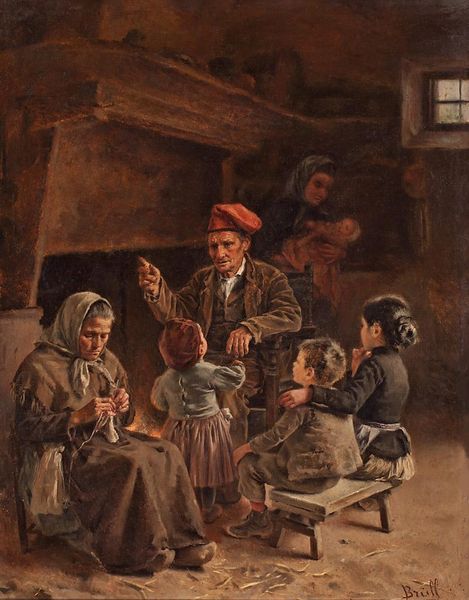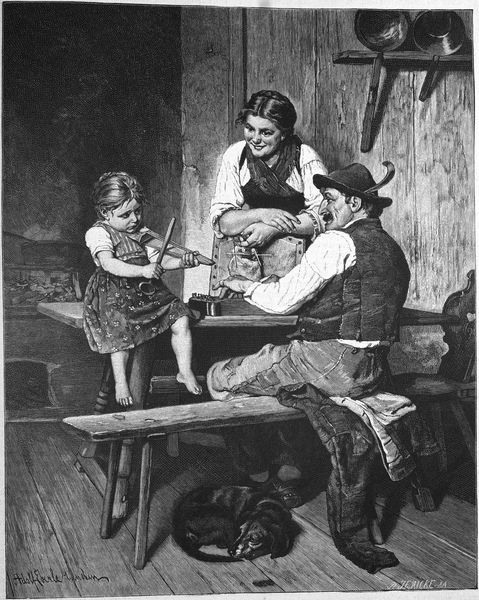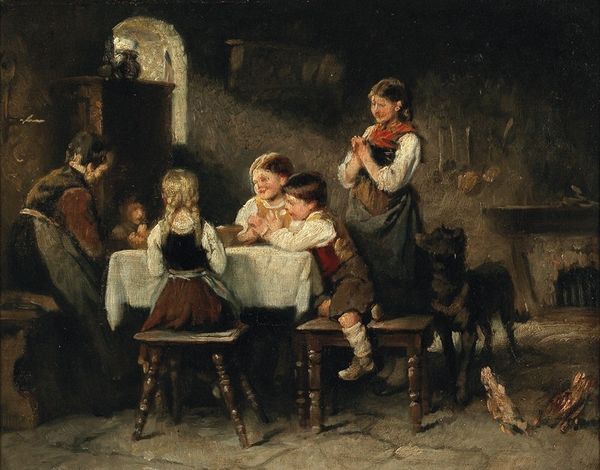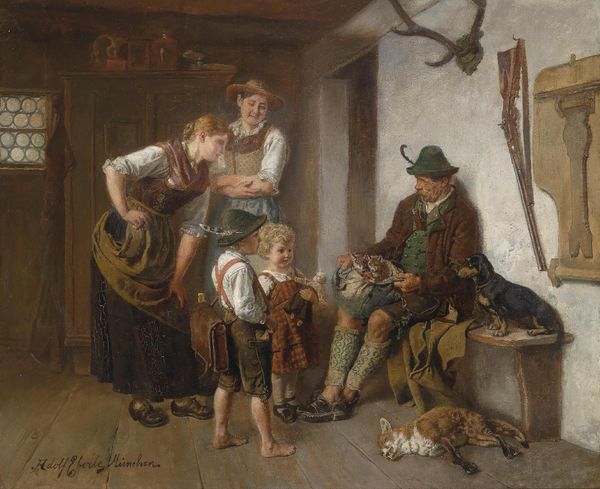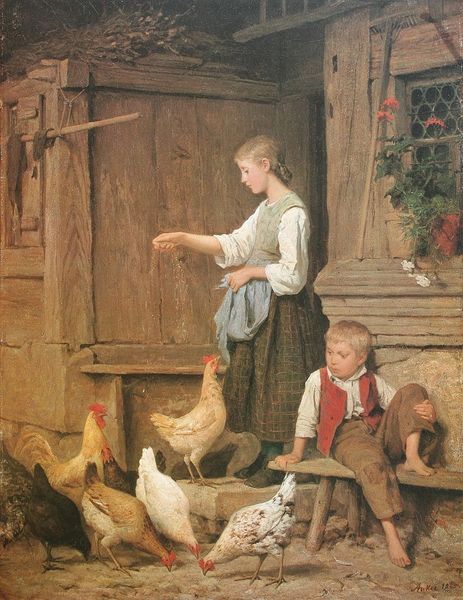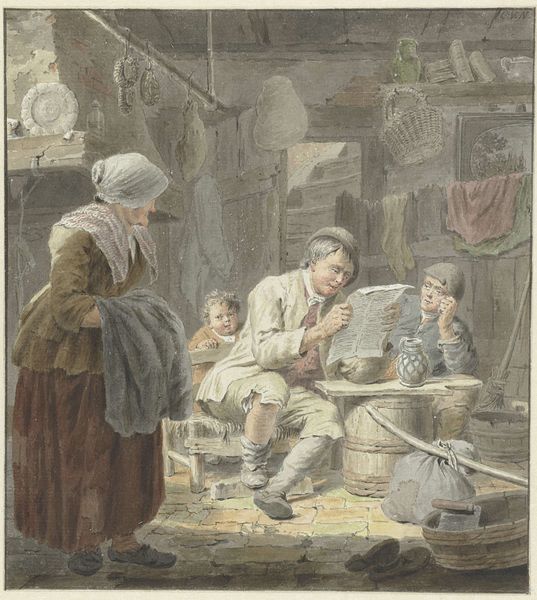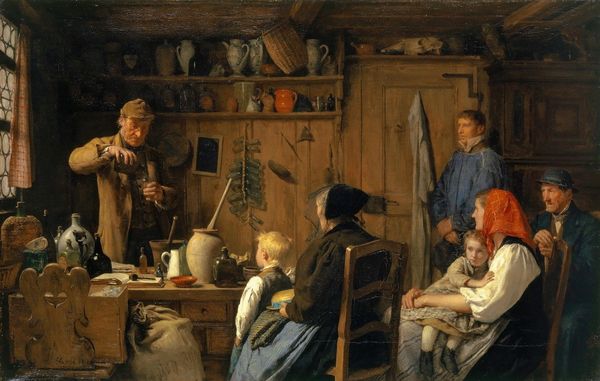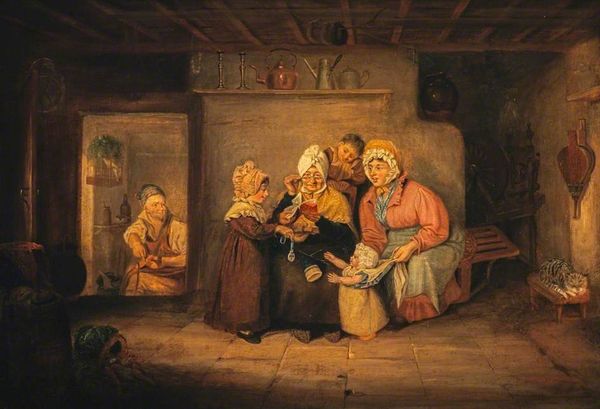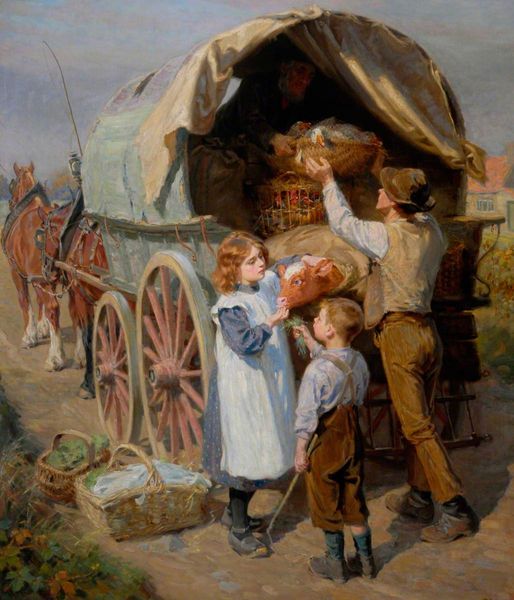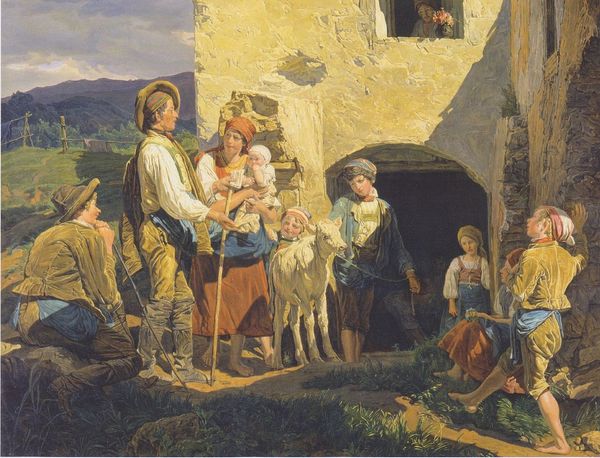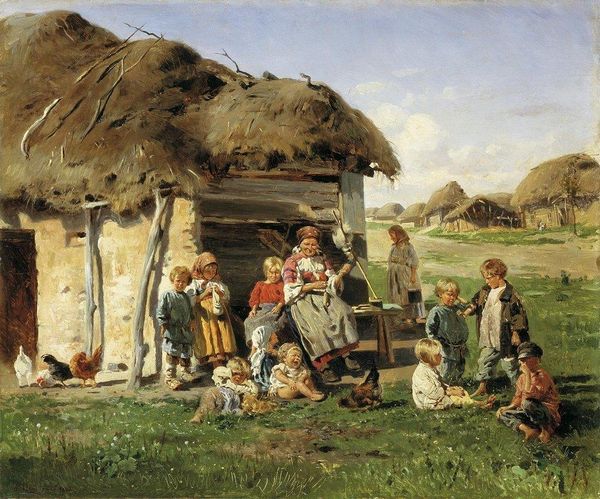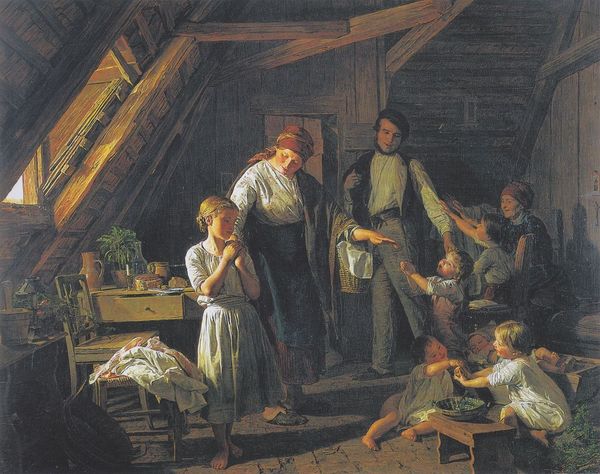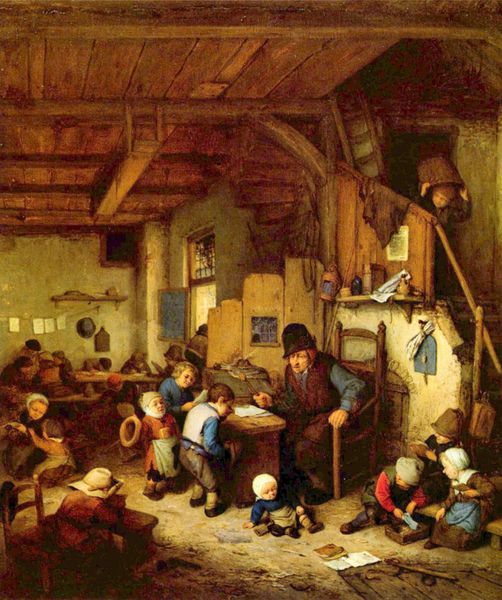
Dimensions: 74 x 109 cm
Copyright: Public domain
Art Historian: Editor: Editor: Right now, we're looking at Albert Anker's "Grandfather Telling a Story", painted in 1884. It's an oil painting currently held at the Kunstmuseum in Bern. It has such a warm, domestic feeling, depicting a grandfather surrounded by his family. How do you interpret this work? Art Historian: Well, let's consider the historical context. Anker painted during a time of significant social change in Switzerland, with industrialization and urbanization beginning to challenge traditional rural ways of life. The scene isn't just a charming family moment; it's a statement. Anker’s focus on family reflects an ideal during a period where family structures and traditions were beginning to evolve and even erode due to new economic and social realities. Notice how the figures are positioned, bathed in a soft, golden light, almost staged like a tableau. How does this composition speak to you? Editor: I see what you mean. The grandfather is very much the center of attention, like a performer holding court. The children seem captivated, and even the chickens are gathering round! But I'm not sure I fully grasp how industrialization plays a role. Art Historian: It’s about nostalgia, or perhaps, an imagined stability. Anker, celebrated for his sympathetic portrayal of rural life, might be subtly critiquing the shifts in Swiss society by highlighting the perceived virtues of simpler, pre-industrial existence. He romanticizes tradition but perhaps does so to call attention to what’s being lost. Do you think the narrative being told is as important as the mere fact that he is there, engaging in the act of oral tradition? What kind of messages about history are implicitly expressed through who is in the scene, or omitted from it? Editor: That's a fascinating point. Perhaps the painting is not just showing us a scene, but is subtly arguing for the importance of connection and roots amidst wider societal changes. Thinking about it now, I realize I was projecting a bit of my own longing for simpler times onto the artwork, maybe mirroring Anker’s intention. Art Historian: Exactly! And that's the power of art – to invite us to reflect not only on the subject matter, but on ourselves, the role of collective memory and identity formation through imagery. Editor: Thanks! I am walking away with an entirely different understanding now. It gives me much to consider beyond the surface.
Comments
No comments
Be the first to comment and join the conversation on the ultimate creative platform.
